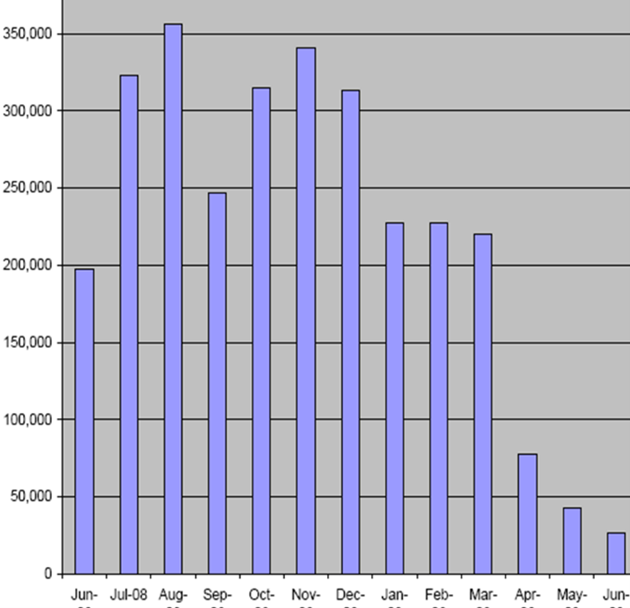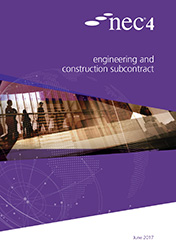
The main contract between the Client and Contractor for general building/construction type projects is the Engineering and Construction Contract. It is subdivided into options, of which the Client will choose either option A,B,C,D,E or F. This bulletin will consider the specific elements of option A for both tendering purposes and administering a live project.
An overview to option A – This option is called a “Priced contract with Activity Schedule” and more commonly known as a “lump sum fixed price” contract. It is chosen by Clients who generally have a well-developed Scope with a risk profile that would be sensible/realistic for a Contractor to be able to price.

Activity Schedule: The Contractor is expected to produce the Activity Schedule. In simple terms this is a case of breaking the project down into a number of items, allocating costs against each of those items, with the sum of the items adding up to represent the overall tender price (the Prices). The Activity Schedule will then be referenced in contract data part 2 as to where it is included within the tender submission. This document will then also form part of the signed contract. The “Price for Work Done to Date” (application) that the Contractor can claim for each period is the sum of the total of completed items on the Activity Schedule. If an item is not complete, a Contractor will NOT be entitled to claim any amount for in that period i.e., NOT paid part percentage for an item that is only partially complete. A Contractor needs to ensure that their Activity Schedule is broken into a good level of detail in the first place, suitable for the value and duration of that project to enable good cashflow.

Activity Schedule in relation to the programme: There is an obligation under clause 31.4 for items on the Activity Schedule to relate to the operations shown on the programme issued for acceptance. Although not compulsory, it works very well with this option to cost load the programme in line with the Activity Schedule and the applications can then be assessed directly from the programme. It is just a case of running a filter within the planning software that shows any cost loaded items that are complete (or due to be complete) by the application date. It also means the Contractor will be able to demonstrate a remaining cost profile forecast that would automatically update every time the programme is updated and rescheduled.
Revising an Activity Schedule: The Contractor can propose a change to an Activity Schedule if they change a planned method of working so that the activities on the Activity Schedule no longer relate to items on the Accepted Programme/Scope. The revised Activity Schedule needs to be issued to the Project Manager for acceptance. The only reasons for not accepting a revised Activity Schedule are that 1) the items do not relate to items on the Accepted Programme, 2) the total of Prices is changed, or 3) the changed prices are not reasonably distributed (i.e. should not be excessively front loaded). Otherwise, the revised Activity Schedule should be accepted by the Project Manager and be the version that should be used to assess the next application for payment. It is not envisaged that this would be done frequently during the life of the project, unlike the programme that will be updated and reissued for acceptance every period.
Compensation Events: Unless by agreement, Activity Schedule rates will NOT be used to assess compensation events. They will be built up from first principles using the Short Schedule of Cost Components. An Activity Schedule does not need to be revised every time a compensation event is agreed. It will just be added to the “bottom line” of the Activity Schedule so the Prices at anyone point in time will be the original total on the Activity Schedule at tender stage, plus the value of any implemented (agreed) compensation events.

People Rates: It is a new NEC4 requirement for Contractors to now include a list of People Rates as part of contract data part two within their tender submission. These are the rates that will be used in the assessment of any compensation events. Previously under NEC3 this rate would be proposed for each and every event as they occurred, but the intent under NEC4 is that these rates are pre-agreed and therefore one less thing to argue over as part of a compensation event quotation. For any compensation event, where the list of People Rates does not include a category of a person required, the Project Manager and Contractor may agree a new rate. If they do not agree, the Project Manager assesses the rate based on other similar People Rates. If the Contractor does not agree with this rate assessed by the Project Manager, their only recourse would be through the dispute process within the contract.
Short Schedule of Cost Components: This is only used under option A to assess compensation events so is slightly more condensed than the full schedule which is used for option C. It is made up of eight categories that the Contractor would be able to claim relevant costs for when assessing a compensation event quotation:
- People – by using the People Rates multiplied by the amount of time appropriate to the rate spent within the Working Areas
- Equipment – amounts for equipment using the rates or published list in contract data for items such as excavators, scaffolding, dumpers etc
- Plant and Materials – for all permanent works that are installed such as pipework, cladding, cabling etc
- Subcontractors – a new category for NEC4 where Subcontractors costs can now be included as a lump sum, rather than having to break it down into the other categories listed
- Charges – for example, services into the site to run offices welfare, disposal of materials from site, charges for access to the Working Areas
- Manufacture and Fabrication – rates for people involved in manufacture and fabrication of Plant and Materials outside the Working Areas
- Design – rates for people involved in design done outside the Working Areas, as well as cost of travel to the Working Areas
- Insurance – which only confirms that you cannot claim for insurable events or insurance premiums
Value Engineering: NEC4 has added in a new process entitled “Contractor’s proposals”. Where a scheme is a Client design, a Contractor can offer a quotation for a saving where they are able to recommend a value engineering proposal and share in the resultant saving. In contract data part 1 there will be a stated “value engineering percentage” which is the factor that will adjust the total of the Prices. If the value engineering percentage is 50%, the Prices will be reduced by 50% of the quotation, meaning that the Client gets half, and the Contractor gets half. Anything other than 50% would obviously mean that one party would get more of a saving than the other in such eventuality.

Differences with the Engineering and Construction Subcontract (ECS) The Contractor should be looking to pass their contractual obligations with their supply chain on a back-to-back basis. The ECS allows the Contractor to do exactly that. The rules, principles and even clause numbers are almost identical in the ECS as they are in the ECC. Everything in this bulletin therefore applies to the Subcontractor in relation to their Contractor if they are engaged under an ECS option A. The only real changes between the ECC and ECS are that the names of the Parties change (from Client/Contractor to Contractor/Subcontractor), and that some of the timescales change for Subcontractor to do something within and for the Contractor to respond.
Summary: Option A contracts are the type that place most risk on the Contractor, as they carry the risk for anything not priced and deemed included within the lump sum fixed price. However, option A is the option that optimises the Contractor’s opportunity to benefit from their own efficient management and delivery of the project with most cost savings bringing a direct benefit to the Contractor. A Contractor needs to ensure that their Activity Schedule covers everything that is stated within the Scope and broken down to a good level of detail to ensure suitable cashflow during the project. There is the opportunity to revise an Activity Schedule during the life of a project, but the intent is that this is done only occasionally and will need acceptance by the Project Manager before it becomes the new Activity Schedule.

